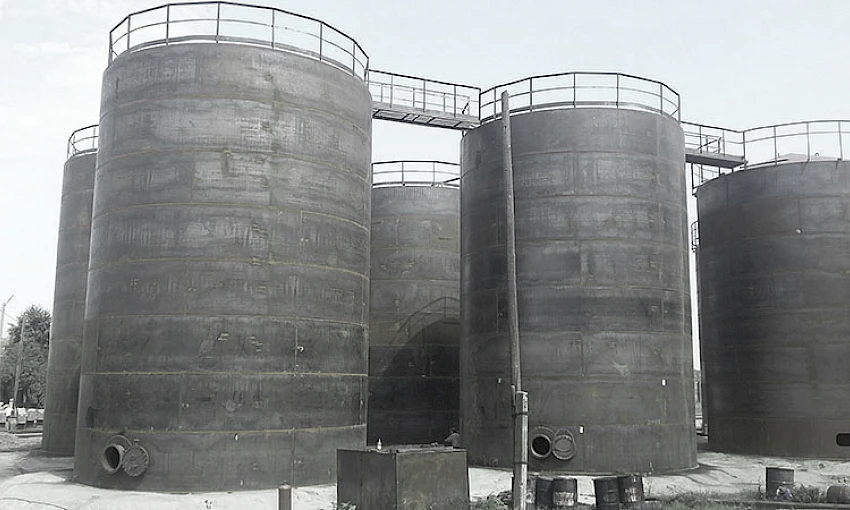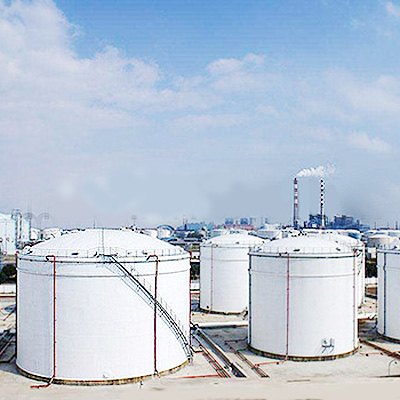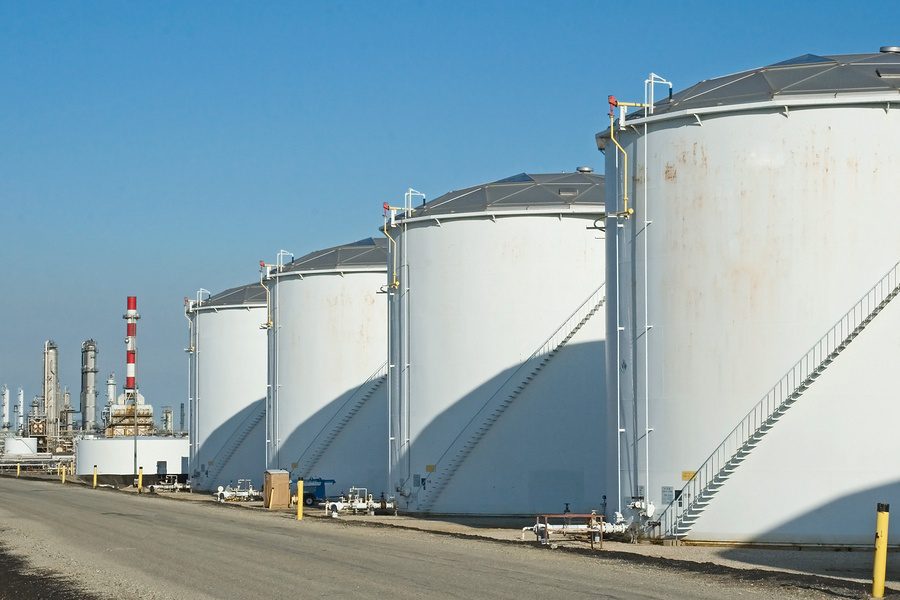How API 650 Welding Inspection Helps Minimize Cracks and Promotes Safety
Wiki Article
A Step-by-Step Consider the Setup Process of Welding Inspection Techniques
Welding examination is an important procedure that ensures structural stability and safety and security. The installment of assessment methods entails several organized steps, each important to achieving reliable outcomes. From planning and device choice to performing visual and non-destructive examinations, each phase demands mindful attention. Comprehending these procedures can greatly boost quality assurance in welding tasks. What difficulties emerge in executing these strategies, and just how can they be effectively attended to?Recognizing the Significance of Welding Evaluation
Welding assessment is a critical element of ensuring architectural honesty and security in building and production processes. This technique includes reviewing bonded joints for flaws, ensuring that they satisfy specific criteria and regulations. By methodically determining weld quality, examiners can recognize issues such as splits, voids, and incomplete blend, which can compromise the strength and sturdiness of frameworks.The value of welding inspection extends beyond prompt security problems; it assists protect against expensive failings and possible risks in the long term. Reliable examination methods foster compliance with industry standards, therefore improving the overall reliability of welded parts. Additionally, a durable examination procedure adds to keeping the credibility of makers and home builders, as it ensures clients of the high quality of their jobs. Inevitably, understanding the importance of welding assessment is critical for advertising secure building methods and ensuring the long life of necessary infrastructure and items.
Choosing the Right Devices for Inspection
When choosing the proper devices for assessment, it is important to consider the specific demands of the welding process and the products included. Numerous assessment approaches, such as aesthetic, ultrasonic, and radiographic screening, demand distinctive tools customized to their unique demands. For visual examinations, devices like amplifying calipers and glasses are vital for examining weld top quality. Ultrasonic testing calls for specialized equipment with the ability of sending and obtaining acoustic waves to identify inner defects. Radiographic screening, on the other hand, makes use of X-ray or gamma-ray resources along with delicate film or electronic detectors to reveal inconsistencies.
In addition, individual protective tools (PPE) is important to assure the security of assessors throughout analyses. Picking the right devices not just improves the precision of inspections but likewise adds to the overall stability and safety of the welding task. A complete understanding of readily available tools and their applications is critical for efficient welding inspection.
Planning for the Examination Refine
Prior to starting the inspection procedure, it is vital to develop a complete strategy that describes the scope and objectives of the analysis. This strategy ought to consist of details requirements that define what constitutes acceptable high quality in the welding work being inspected. Identifying the pertinent codes and requirements is essential, as they will certainly direct the assessment requirements and approaches.Additionally, employees associated with the inspection must be properly trained and accredited in welding evaluation strategies to ensure dependability and precision. A list can be beneficial in arranging the numerous elements of the assessment, ranging from devices readiness to ecological problems that might influence the analysis.

Finally, logistical considerations such as scheduling, available sources, and communication in between team members need to be dealt with. By preparing methodically, examiners can enhance the performance of the examination and make certain that all critical factors are duly thought about prior to waging the examination itself.
Conducting Visual Assessments

Carrying out visual inspections is an important action in the welding evaluation process, calling for careful prep work to guarantee efficient analysis. Assessors must recognize with key defect signs that can signal possible issues in weld high quality. By concentrating on these facets, one can boost the general integrity of the examination outcomes.
Preparing for Visual Assessment
Visual assessment works as a vital initial step in the welding inspection procedure, ensuring that any type of possible defects are recognized early (API 650 Welding Inspection). Proper preparation is vital for efficient aesthetic examination. Assessors ought to begin by evaluating pertinent paperwork, including welding treatments and specifications, to recognize the project demands. They have to gather needed tools, such as multiplying glasses, flashlights, and suitable individual protective equipment (PPE) A detailed evaluation of the examination location is vital; assessors ought to validate it is clean and cost-free of obstructions. Additionally, it is very important to establish ideal illumination conditions to improve presence of welds. By taking these primary steps, examiners can create an environment helpful to identifying discrepancies and guaranteeing the honesty of the welded frameworksSecret Flaw Indicators
An extensive understanding of essential defect signs is crucial during aesthetic evaluations to guarantee the high quality and safety and security of bonded joints. Assessors must concentrate on particular indicators such as cracks, porosity, damages, and insufficient fusion. Splits might appear as sharp her latest blog lines and can endanger structural integrity. Porosity manifests as tiny openings that can weaken weld stamina. Undercuts, which are grooves along the weld side, can lead to tension concentration. Incomplete combination shows that the weld steel did not effectively bond with the base material, resulting in a weak joint. By systematically determining these flaws, assessors can establish conformity with sector requirements and improve the total integrity of welded frameworks, eventually adding to safer operational problems.Executing Non-Destructive Evaluating Methods

Numerous non-destructive screening (NDT) techniques are integral to assuring the integrity of bonded structures without compromising their performance. These methods permit assessors to evaluate weld top quality and identify problems her comment is here without causing damage to the materials being evaluated. Common NDT strategies consist of ultrasonic testing, radiographic screening, magnetic particle testing, and dye penetrant screening. Each technique offers a particular objective, addressing different kinds of imperfections such as fractures, porosity, or incomplete blend.
Implementing NDT strategies needs a systematic technique, starting with choosing the ideal technique based upon the products and the nature of the weld. Training personnel in these techniques is important for exact outcomes. Additionally, establishing clear procedures and standards assurances uniformity throughout the assessment procedure. By integrating NDT right into the welding examination process, companies can enhance the dependability of their products while reducing prospective threats related to structural failures. This positive approach inevitably adds to maintaining safety and security and quality requirements in bonded buildings.
Documenting and Evaluating Assessment Outcomes
Efficient documentation and analysis of assessment results are vital components of the welding assessment procedure. Exact records of examination searchings for act as a referral for top quality guarantee and compliance with industry standards. API 650 Welding Inspection. Assessors need to make use of digital platforms or structured forms to log information such as the sort of weld, inspection methods employed, and any type of disparities determined throughout the examinationOnce information is gathered, detailed evaluation is crucial. This includes comparing results against established criteria to identify patterns or persisting concerns. Analytical tools may be used to measure defects and analyze their influence on total weld quality.
Moreover, efficient interaction of searchings for to pertinent stakeholders is necessary. Recaps and records should be concise and clear, highlighting vital understandings and referrals for rehabilitative activities. By methodically analyzing and recording inspection results, companies can promote constant improvement in welding techniques and improve product honesty.
Often Asked Concerns
What Qualifications Are Needed to Come To Be a Welding Examiner?
To view it come to be a welding examiner, one usually needs pertinent accreditations such as AWS CWI, together with experience in welding techniques, understanding of welding codes, and effectiveness in evaluation methods to guarantee quality and security requirements.How Commonly Should Welding Inspections Be Performed?
Welding examinations must be conducted consistently, typically after each weld is finished, and occasionally throughout jobs. Elements such as project complexity, industry standards, and governing requirements can influence the regularity of these assessments.What Is the Cost of Welding Assessment Solutions?
The cost of welding assessment solutions differs considerably based on aspects such as project dimension, intricacy, and area. Generally, costs vary from $100 to $150 per hour, with additional charges for specialized screening and qualifications.Exist Certifications for Welding Inspectors?
Yes, there are various qualifications for welding inspectors, including those used by the American Welding Society (AWS) and the International Institute of Welding (IIW) These accreditations assure examiners have the necessary skills and understanding for efficient examinations.
Exactly how Do I Choose an Examination Provider?
To choose an inspection provider, one need to review certifications, experience, market credibility, and consumer evaluations. Furthermore, contrasting service offerings and pricing can aid guarantee the chosen company fulfills certain job requires efficiently.Additionally, employees entailed in the evaluation has to be properly trained and accredited in welding assessment techniques to ensure reliability and accuracy. Carrying out visual assessments is a crucial action in the welding assessment process, requiring cautious prep work to assure effective examination. Visual evaluation offers as a vital initial action in the welding assessment process, guaranteeing that any possible defects are determined early. Efficient paperwork and evaluation of inspection outcomes are essential components of the welding examination procedure. Welding inspections must be conducted regularly, commonly after each weld is finished, and regularly during jobs.
Report this wiki page